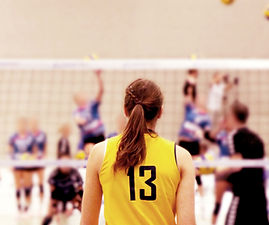

ELIMINATE THE UNKNOWN
Some questions we believe you should be able to answer easily...
71+ percent of your athletes continue to significantly miss carbohydrate needs. Interventions show some improvement but consistently leave athletes 30 percent short of needs. (1-5)
-
What are the g/kg carbohydrate needs of each of your athletes on any given day?
-
Which ones are meeting needs and which ones aren’t?
-
How do they know what their late night snack should be based on previous intake, training, goals, etc.?
-
How do they adjust if training is a little longer or more intense than expected?
-
Can each athlete describe what their needs look like on any given day?
-
What was the impact of your intervention on an individual and group level?


27+ percent of your athletes likely present with at least two major signs of RED-S. 53 percent of your female athletes may fulfill at least one condition of the female athlete triad. (6-9)
-
What is the relative energy availability of each athlete? Who is below 30kcals/kg/d?
-
Do athletes meet their individual daily needs with variations in training volume, intensity, and periodization, body composition goals, and injuries? Can they easily fit foods to their specific needs in any situation, any time of day and season?
-
How do athletes achieve quality and quantity food intake? Who is exceeding fiber goals and failing to meet energy needs?
56+ percent of your athletes may currently be attempting to change their weight or body composition. (5)
-
Which ones shouldn’t be right now? Who's doing it the right way?
-
How many are struggling? Who is performing poorly as a consequence?
-
Who isn’t meeting the approximate 2.2g/kg protein needs while in a deficit to preserve lean mass?
-
Which ones are back-loading calories and impairing performance and body composition?

-
Valliant, et al. Nutrition Education by a Registered Dietitian Improves Dietary Intake and Nutrition Knowledge of a NCAA Female Volleyball Team. Nutrients. 2012;4(6):506-16.
-
Beggs, et al. The Impact of Nutritional Counseling in Conjunction with Co-active Coaching on Behavior Change of Varsity Female Rowers. Sports Nutr Ther. 2016;1(3):1-8.
-
Baranauskas, et al. Differential in Maximal Aerobic Capacity by Sex in Collegiate Endurance Athletes Consuming a Marginally Low Carbohydrate Diet. J Am Coll Nutr. 2017;36(5):370-377.
-
Nepocatych, et al. Analysis of Dietary Intake and Body Composition of Female Athletes over a Competitive Season. J Sports Sci Med. 2017;6(2):57-65.
-
Hinton, et al. Nutrient Intakes and Dietary Behaviors of Male and Female Collegiate Athletes. Int J Sport Nutr Exerc Metab. 2004;14(4):389-405.
-
Mountjoy, et al. The IOC consensus statement: beyond the Female Athlete Triad—Relative Energy Deficiency in Sport (RED-S). Br J Sports Med 2014;48:491–7.
-
Gibbs, et al. Prevalence of Individual and Combined Components of the Female Athlete Triad. Med Sci Sports Exerc. 2013;45(5):985-96.
-
Logue, et al. Low Energy Availability in Athletes: A Review of Prevalence, Dietary Patterns, Physiological Health, and Sports Performance. Sports Med. 2018;48(1):73-96.
-
Ackerman, et al. Low energy availability surrogates correlate with health and performance consequences of Relative Energy Deficiency in Sport. Br J Sports Med 2018;0:1–6.
